It is the deadliest flood in a single European country since 209 people lost their lives in Romania in 1970.
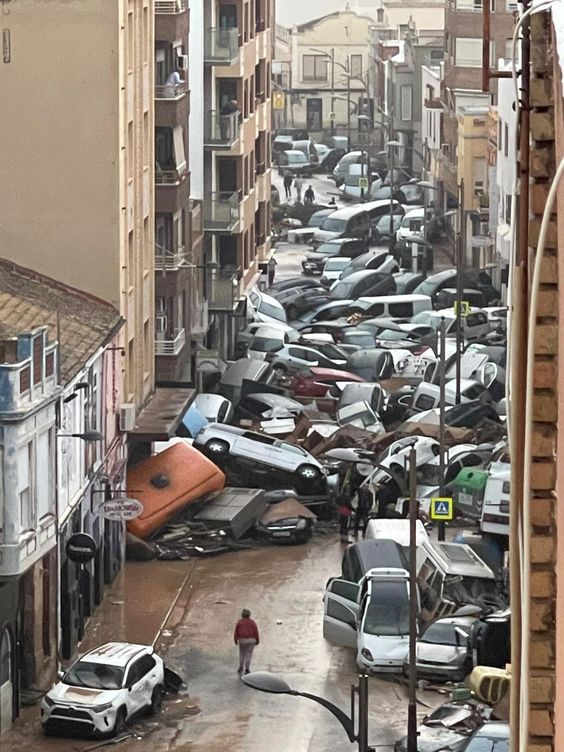
Once again Europe has found itself a victim of severe blocking, resulting in 13” of rain in just 4 hours near #Valencia #Spain, with devastating flooding!
Below you can see the storm cut off from steering stuck in between blocking in all directions. #Flood https://t.co/RXkCfuEkyM pic.twitter.com/gmyJdGNibf — Jeff Berardelli (@WeatherProf) October 30, 2024
What caused the disaster in Valencia.
A cold drop is a high impact rainfall event occurring in the autumn along the Spanish Mediterranean coast, also known as isolated depression at high altitude (DANA in Spanish, depresión aislada en niveles altos).pic.twitter.com/Dhb8Ltk6aV — Massimo (@Rainmaker1973) October 30, 2024
Daniel Jato Espino, Senior Researcher / Professor in Environmental Engineering and Management,
International University of Valencia
The cold drop in the province of Valencia is being labeled as “the worst of the century” due to the material and human losses it is causing, including 219 deaths and dozens of missing people. This distinction deepens the public perception of these phenomena, often defined as “natural disasters.” But how much of what is happening in Valencia is a “disaster,” and how much is “natural?”
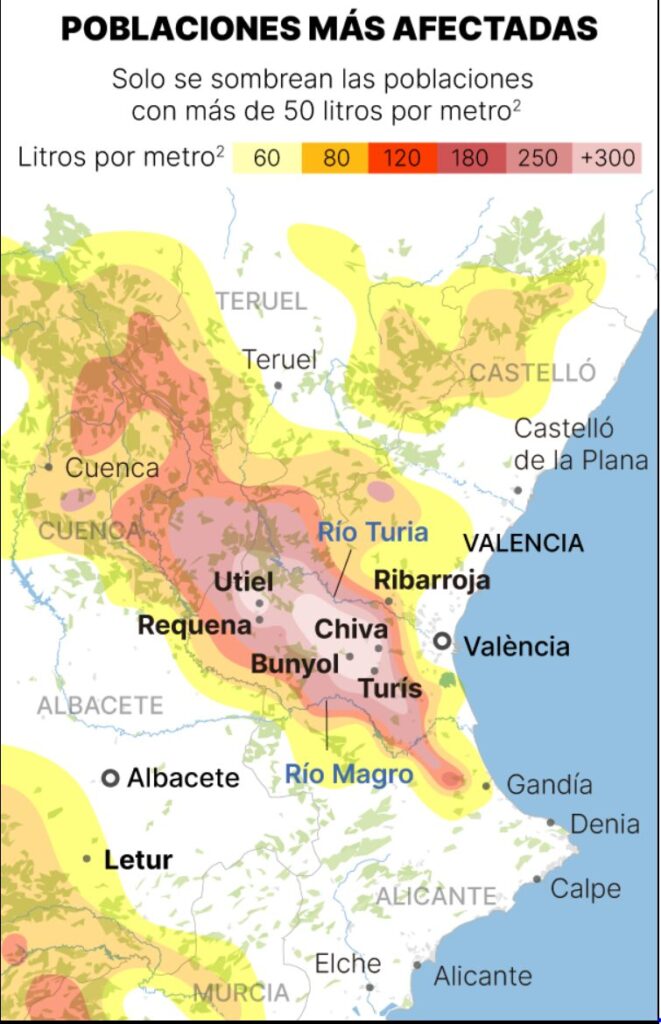
The importance of terminology
To speak of a disaster, there must be an interaction between a natural event or danger (the cold drop) and a vulnerable social group (the Valencian population). Danger and vulnerability are the two components of risk, so the first can evolve into a disaster thanks to the existence of the second. In this way, the disaster can be defined as a social construction of risk.
It follows from the above that, contrary to the association often made in public discourse, a disaster is not an unavoidable fate to which the only response is lament. Nor is it something attributable to climate change as an alien entity with which humans have nothing to do. Climate change is accelerating the water cycle, which in turn causes more violent rainfall events (natural hazards). But, again, this does not lead to disasters.
Changing the discourse is essential and has implications on two levels. First, it can help us better understand humans’ contribution to disasters. Second, it allows us to propose measures to deal with climate hazards such as a cold drop.
These measures can be structural or non-structural , depending on whether they involve physical actions or not. In any case, both levels are related to each other, as well as to the sustainability of humanity in the future since our socio-economic development has not been harmonized with environmental protection.
Water-sensitive human development
The European Union’s Climate Adaptation Platform (Climate-ADAPT) has imported the concept of water-sensitive urban design (WSUD), which was coined in Australia to minimize the impacts of urban development on water resources.
The emergence of this concept and others like it originates in the urbanization and urban expansion that the planet has experienced in recent decades. If 56% of the population—4.4 billion—lives in cities today, forecasts indicate that 7 out of 10 people will live in urban areas in 2050. These figures reveal the lack of human perception in the face of the reduction that such uncontrolled growth implies in the capacity to prevent, reduce, or minimize the consequences of a natural event.
Given the current and expected levels of development, the focus must be on regeneration through naturalization mechanisms. The concept of water-sensitive urban design can be extrapolated to spatial planning in general, so planning public space that respects the natural water cycle can help prevent and mitigate the impacts of climatic events.
The strategic implementation of nature-based solutions can generate green and blue infrastructure networks with multiple associated environmental values, including better rainwater management. Specifically, green infrastructure allows precipitation to be captured at the source (i.e., where the rain falls) and its subsequent filtration into the ground. In this way, the generation and accumulation of runoff (surface water that does not infiltrate the soil) is avoided.
Read more: Imitating nature to prevent flooding in cities
Public education and awareness
Adopting measures such as those described above requires an alignment between territorial public policies and water resource management, which is not trivial. Again, assuming responsibility in this escalation from danger to disaster is essential to not undermine the public will to respond to the existence of environmental phenomena.
Therefore, despite the potential of structural solutions, the priority must always be to promote non-structural measures such as awareness-raising and education. These measures must be based on participatory processes involving different social groups and demographic profiles, given that vulnerability increases depending on factors such as sex, age, and nationality.
Understanding how to prepare for and respond to climate events is essential to prevent them from becoming disasters. To acquire this knowledge, the first step is to recognize the components of risk and their relationship to the specific environment in which individuals are situated. This way, actions can be developed, such as establishing safe meeting points and designing contingency plans to mitigate impacts.
In addition, communication is also a key element in the management of climate and environmental events. Administrations must provide advance information on the occurrence of these types of phenomena, as well as recommendations and action protocols. On the other hand, citizen associations within communities can strengthen response capacity and social cohesion in the face of negative impacts.
In conclusion, I go back more than 2,000 years to quote Sun Tzu: “If you know the enemy and know yourself, you need not fear the result of a hundred battles. If you know yourself but not the enemy, you will also suffer a defeat for every victory you win. If you know nothing of either the enemy or yourself, you will succumb in every battle.”

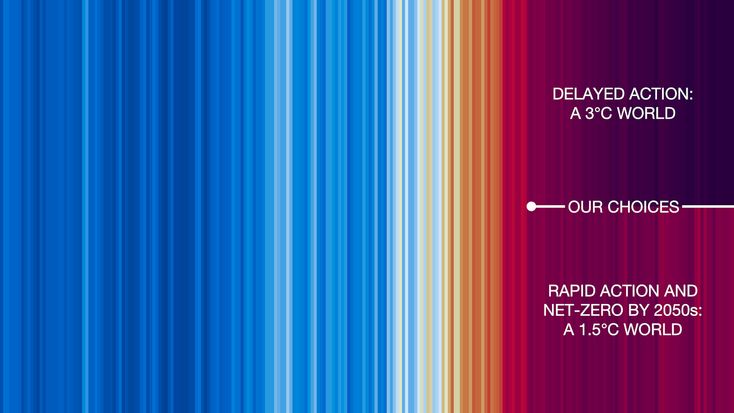
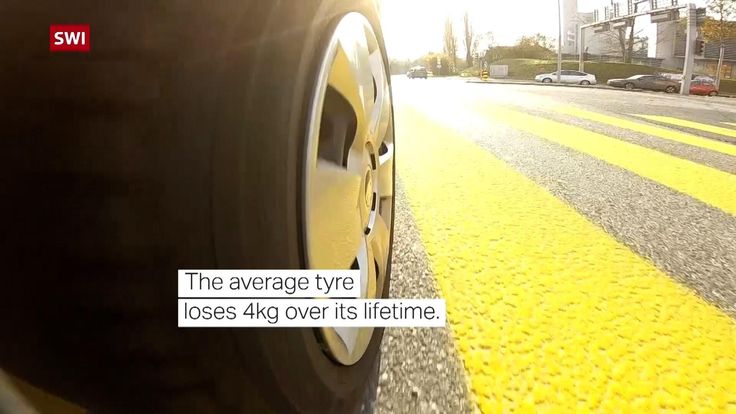
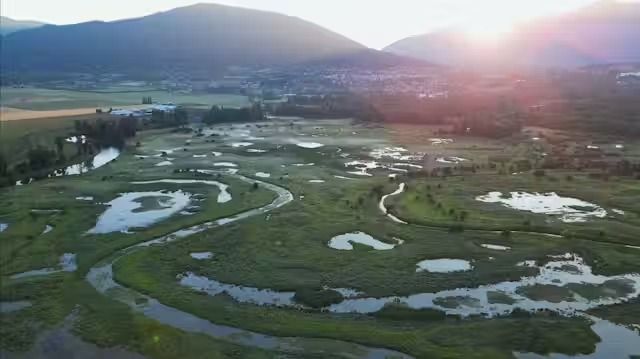
Comments are closed.